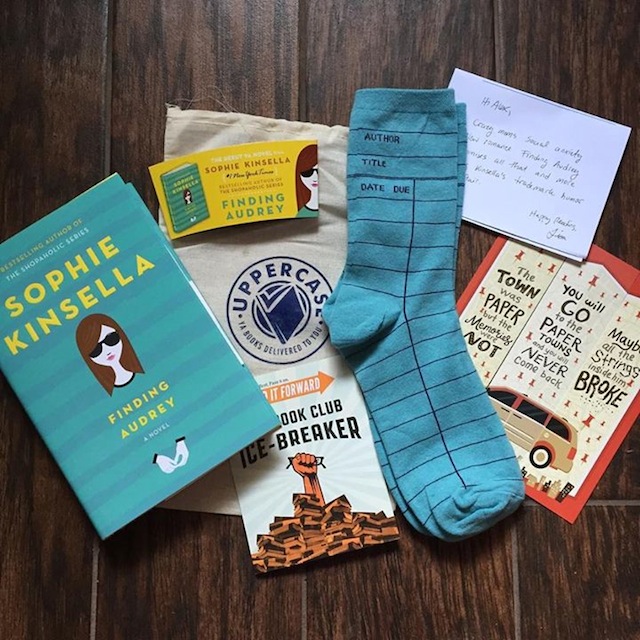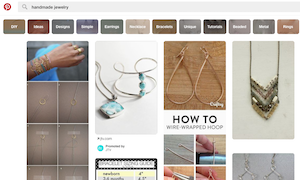You’ve just pushed your eCommerce store live on your website - or maybe you’re an eCommerce veteran and you’re strategizing next steps - either way, you’re looking for a simple way to set yourself up for shipping success. If you want to save yourself heartache and get on track for eCommerce success, you'll need learn the ins and outs of shipping. It's critical to your business’ growth to establish good shipping habits early on in your company’s lifetime. You’ll need a solid understanding of how to ship your store orders out so you can focus on developing your products and other aspects of your online business. Cover all your shipping bases by following the tips outlined below.
1. Buy a thermal label printer and sticker labels
Print your shipping labels on finger-friendly sticker paper. Instead of printing on your clunky standard 8.5x11 in paper printer, save yourself time and wasted paper with a thermal label printer. The printer syncs up with your computer just like your inkjet printer, but it’s smaller and faster at printing labels. Check out the DYMO 4XL, a popular choice among eCommerce merchants.
2) Add a personal touch to your packages
We all like to feel special and taken care of. And many of us love little surprises. Shipping may be the most repeatable part of your day-to-day business efforts - mundane, time-consuming, the filler of your day. Remember that it’s also the closest thing to in-person contact that your customers will have with your company and brand.
Take advantage of this golden opportunity to exceed their expectations: write a quick handwritten note and include it in your new customers’ first orders. Sign your name and thank them for trying out your product. This is a great way to go above and beyond, showcasing your store’s personality in a way that’s guaranteed to make your customers smile. Give your customers a reason to want to buy from you again from the second they open their package.
Print your shipping labels on finger-friendly sticker paper. Instead of printing on your clunky standard 8.5x11 in paper printer, save yourself time and wasted paper with a thermal label printer. The printer syncs up with your computer just like your inkjet printer, but it’s smaller and faster at printing labels. Check out the DYMO 4XL, a popular choice among eCommerce merchants.
2) Add a personal touch to your packages
We all like to feel special and taken care of. And many of us love little surprises. Shipping may be the most repeatable part of your day-to-day business efforts - mundane, time-consuming, the filler of your day. Remember that it’s also the closest thing to in-person contact that your customers will have with your company and brand.
Take advantage of this golden opportunity to exceed their expectations: write a quick handwritten note and include it in your new customers’ first orders. Sign your name and thank them for trying out your product. This is a great way to go above and beyond, showcasing your store’s personality in a way that’s guaranteed to make your customers smile. Give your customers a reason to want to buy from you again from the second they open their package.
3) Manage your offline orders smartly
If you find yourself taking down orders at an event, while running a booth, over the phone, or over email from family members, then you know how discombobulated keeping track of all that information can be. Don’t be resigned to the chaos!
Instead of writing names, sizes, addresses, etc. down on scrap pieces of paper or storing them in your email, just centralize that information in a clean Excel or Google spreadsheet for easy editing. Doing so makes it much easier to manipulate the data and upload it to various shipping tools. Just keep that file open on your computer at all times so that when you get stray orders here and there, you can quickly pull up the doc and enter customer information. Streamlining = succeeding.
4) Create shipping labels for orders as they come in
Don’t wait until days have gone by to send out your customers’ orders. Many of us know this, in principle, but business gets in the way and we often delay until the end of the week to send out our shipments. The speedy shipping services of companies like Amazon have set a high bar for the rest of eCommerce: customers expect fast delivery times. A good rule of thumb is to create shipping labels for customer orders within 24 hours of when they were placed.
5) Turn old inventory into a bonus gift
In those times when you have extra inventory for a particular product lying around because you ordered too much, take that as an opportunity to strengthen customer experience by adding in this inventory as a special gift for some of your customers. This is a particular good way to say “thank you” to long-time customers or welcome new ones.
6) Ship subscription orders throughout the month
If you get orders for products like care packages or books on a monthly basis, manage those orders as you would your others. Don’t wait until the end of the month to ship everything, otherwise you stick yourself in a precarious position where, if something goes wrong, you have less turn-around time to maneuver packing all your orders and shipping in time for your monthly deadline. The chances for exhaustion and laziness to set in as you’re processing dozens or hundreds of orders can lead to greater mistakes.
If you find yourself taking down orders at an event, while running a booth, over the phone, or over email from family members, then you know how discombobulated keeping track of all that information can be. Don’t be resigned to the chaos!
Instead of writing names, sizes, addresses, etc. down on scrap pieces of paper or storing them in your email, just centralize that information in a clean Excel or Google spreadsheet for easy editing. Doing so makes it much easier to manipulate the data and upload it to various shipping tools. Just keep that file open on your computer at all times so that when you get stray orders here and there, you can quickly pull up the doc and enter customer information. Streamlining = succeeding.
4) Create shipping labels for orders as they come in
Don’t wait until days have gone by to send out your customers’ orders. Many of us know this, in principle, but business gets in the way and we often delay until the end of the week to send out our shipments. The speedy shipping services of companies like Amazon have set a high bar for the rest of eCommerce: customers expect fast delivery times. A good rule of thumb is to create shipping labels for customer orders within 24 hours of when they were placed.
5) Turn old inventory into a bonus gift
In those times when you have extra inventory for a particular product lying around because you ordered too much, take that as an opportunity to strengthen customer experience by adding in this inventory as a special gift for some of your customers. This is a particular good way to say “thank you” to long-time customers or welcome new ones.
6) Ship subscription orders throughout the month
If you get orders for products like care packages or books on a monthly basis, manage those orders as you would your others. Don’t wait until the end of the month to ship everything, otherwise you stick yourself in a precarious position where, if something goes wrong, you have less turn-around time to maneuver packing all your orders and shipping in time for your monthly deadline. The chances for exhaustion and laziness to set in as you’re processing dozens or hundreds of orders can lead to greater mistakes.
7) Proactively ask for feedback
Honest customer feedback is the bread and butter of a high-growth business strategy. With your head in the weeds running your business, it’s easy to forget to dial back in on what’s really working and what’s not working so well. The best people to get that feedback from are your customers, both happy and unhappy.
Consider including a simple feedback card in a large sample (at least 100) of your packages. Ask for feedback at the exact moment when a person receives their order because you know their experience with you will be top of mind. Use a couple of survey questions or simply an open question format and have the customer either submit this info online or mail the card back to you. Old school touches like this are often the best way to attract attention than simply another email in your inbox.
8) Create a checklist to avoid address errors
A common way to get tripped up while creating shipping labels is with address errors. No matter what shipping solution you’re using, if your addresses are too ambiguous or incorrect, you’ll need to update them to create the proper label. Here are some tips for avoiding address mistakes:
Honest customer feedback is the bread and butter of a high-growth business strategy. With your head in the weeds running your business, it’s easy to forget to dial back in on what’s really working and what’s not working so well. The best people to get that feedback from are your customers, both happy and unhappy.
Consider including a simple feedback card in a large sample (at least 100) of your packages. Ask for feedback at the exact moment when a person receives their order because you know their experience with you will be top of mind. Use a couple of survey questions or simply an open question format and have the customer either submit this info online or mail the card back to you. Old school touches like this are often the best way to attract attention than simply another email in your inbox.
8) Create a checklist to avoid address errors
A common way to get tripped up while creating shipping labels is with address errors. No matter what shipping solution you’re using, if your addresses are too ambiguous or incorrect, you’ll need to update them to create the proper label. Here are some tips for avoiding address mistakes:
- Eliminate all non-English characters like "ñ"
- Input your address information in the correct fields (e.g. the zip code goes in the Zip Code field instead of the City field - a common mistake!)
- Write PO box addresses without the periods: PO vs P.O.
- Double check zip codes here
- Include “St,” "Ave," "Ct," or “Rd" after the street name
9) Answer your customers’ questions before they ask them
You know those questions you get over and over from your customers after they’ve placed an order? The ones about tracking, delivery time, breakables, package insurance, returns, etc.? Save yourself time and pre-emptively share the answers to these FAQs with your customers before they even have the chance to ask them. Simply craft a basic email template that you can send out to all of your customers after they’ve placed their order.
One FAQ we highly recommend including is a reminder that tracking statuses - no matter the shipping carrier - often take at least 24 hours to update, once they’ve been generated. It just takes some time for the status and proper address information to register.
10) Optimize package size to save money
Two of the criteria shipping carriers take into consideration when pricing your package are weight and dimensions. Last year, the carriers created the concept of dimensional weight, which means they charge based on the package’s dimensional weight versus its actual weight, i.e. if you ship a small, light object in a large box, you’ll pay for your label based on the size of the box and not the weight.
Ensure that you’ve optimized your package’s size, as a result! If you’re shipping larger, lightweight items like a football or a backpack, you’re shipping costs increased after this change.
You know those questions you get over and over from your customers after they’ve placed an order? The ones about tracking, delivery time, breakables, package insurance, returns, etc.? Save yourself time and pre-emptively share the answers to these FAQs with your customers before they even have the chance to ask them. Simply craft a basic email template that you can send out to all of your customers after they’ve placed their order.
One FAQ we highly recommend including is a reminder that tracking statuses - no matter the shipping carrier - often take at least 24 hours to update, once they’ve been generated. It just takes some time for the status and proper address information to register.
10) Optimize package size to save money
Two of the criteria shipping carriers take into consideration when pricing your package are weight and dimensions. Last year, the carriers created the concept of dimensional weight, which means they charge based on the package’s dimensional weight versus its actual weight, i.e. if you ship a small, light object in a large box, you’ll pay for your label based on the size of the box and not the weight.
Ensure that you’ve optimized your package’s size, as a result! If you’re shipping larger, lightweight items like a football or a backpack, you’re shipping costs increased after this change.
|
If you want to save money, reconsider your packages - the size, material, and internal packaging. Are you saving space?
|
There you have it! The 10 crucial elements to creating a strong shipping foundation for your eCommerce store. Learn these basics and continue to read up on the latest tips & tricks shared by fellow merchants and you’ll be all set for online success.
 Laura Berk Laura Berk is head of marketing & customer success at Shippo, a shipping API & app for creating shipping labels.
Laura Berk Laura Berk is head of marketing & customer success at Shippo, a shipping API & app for creating shipping labels.










